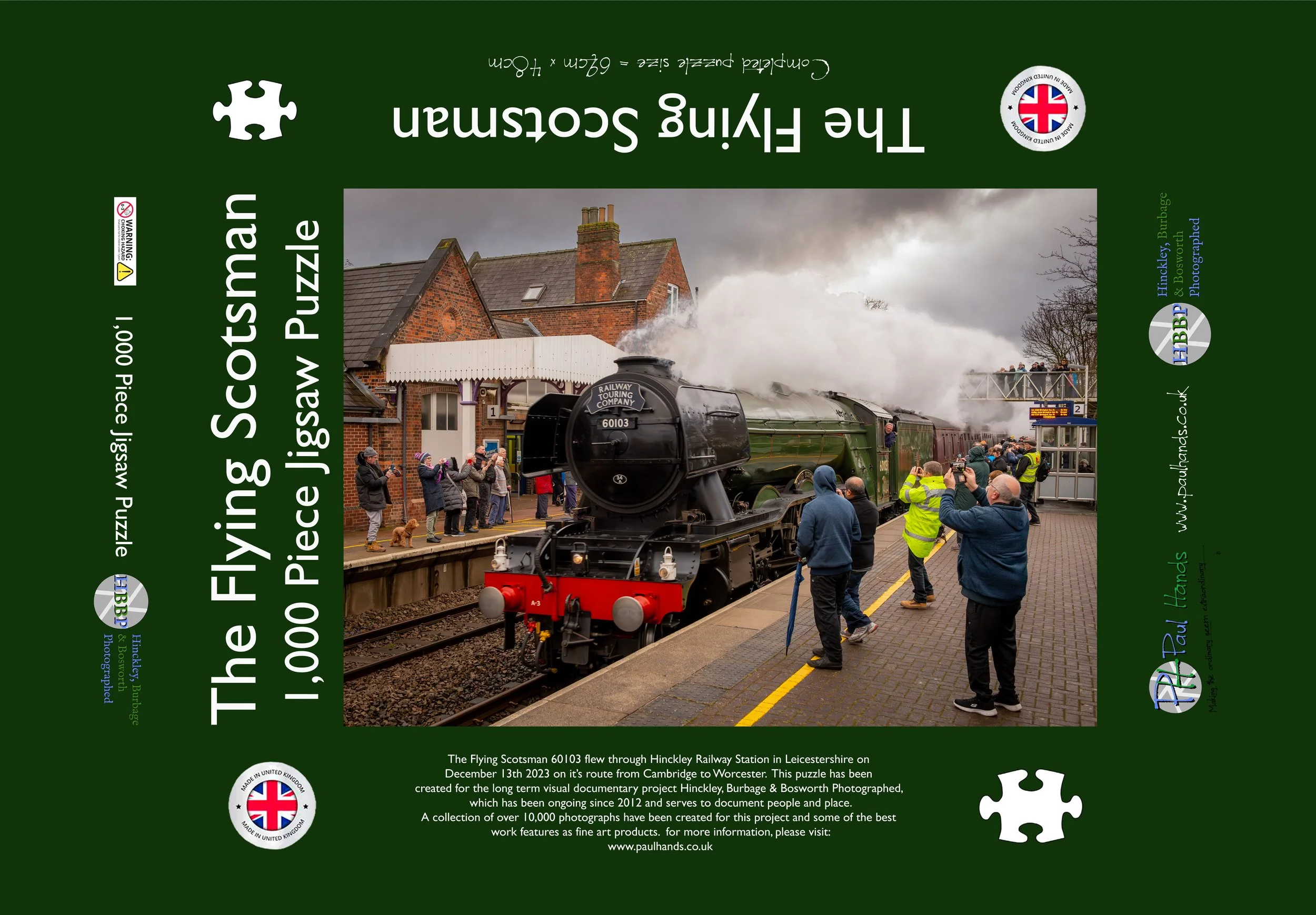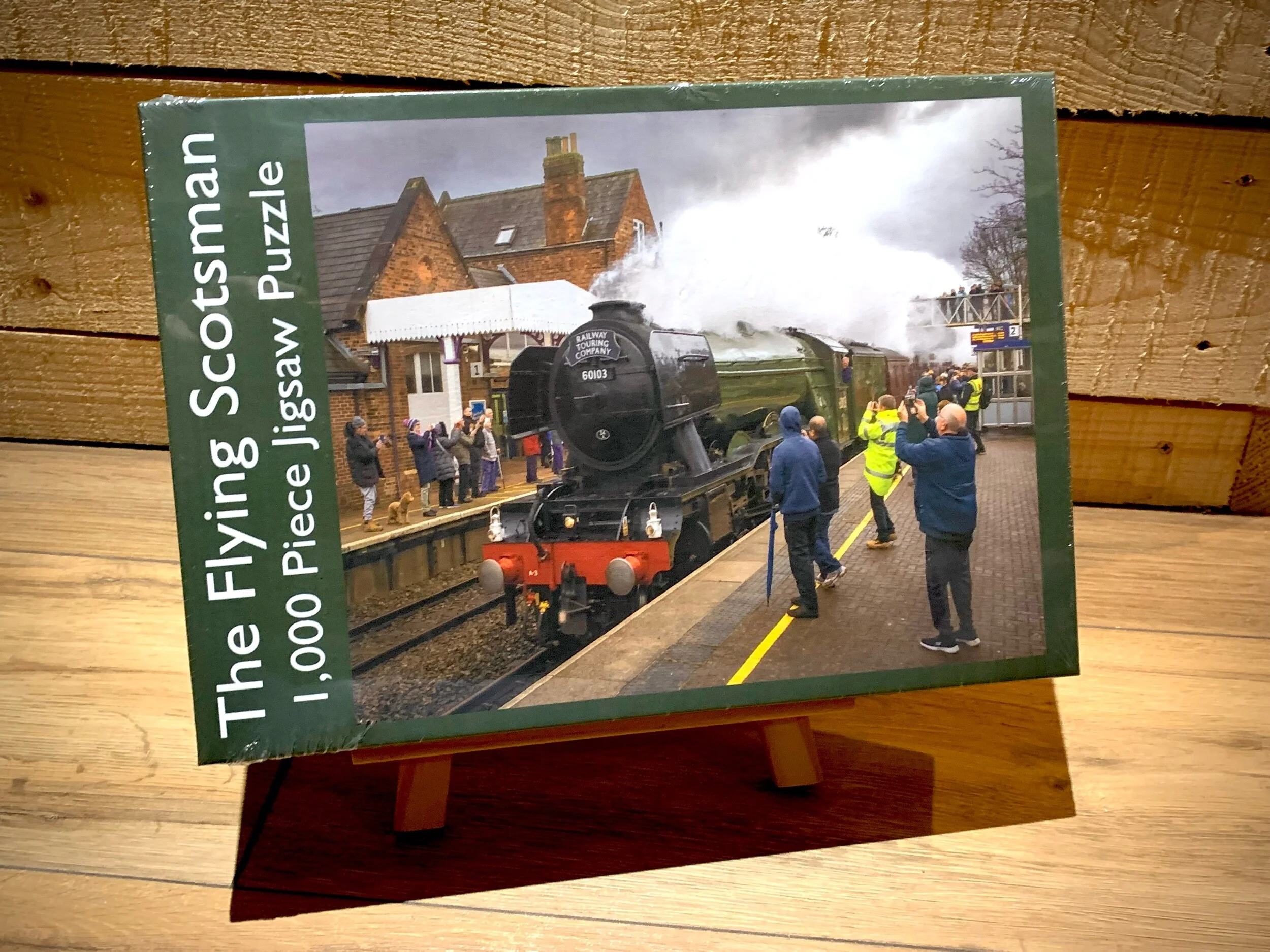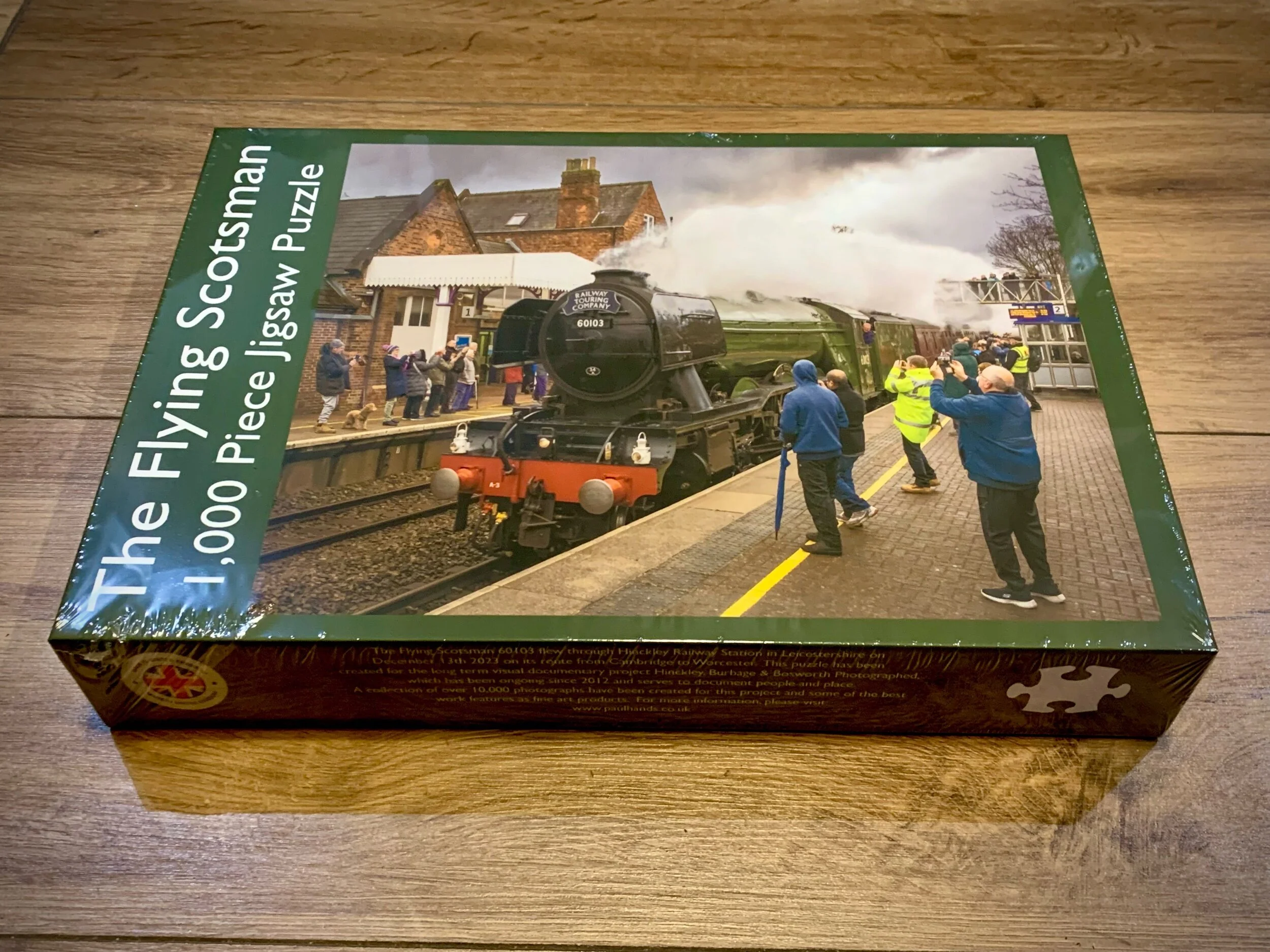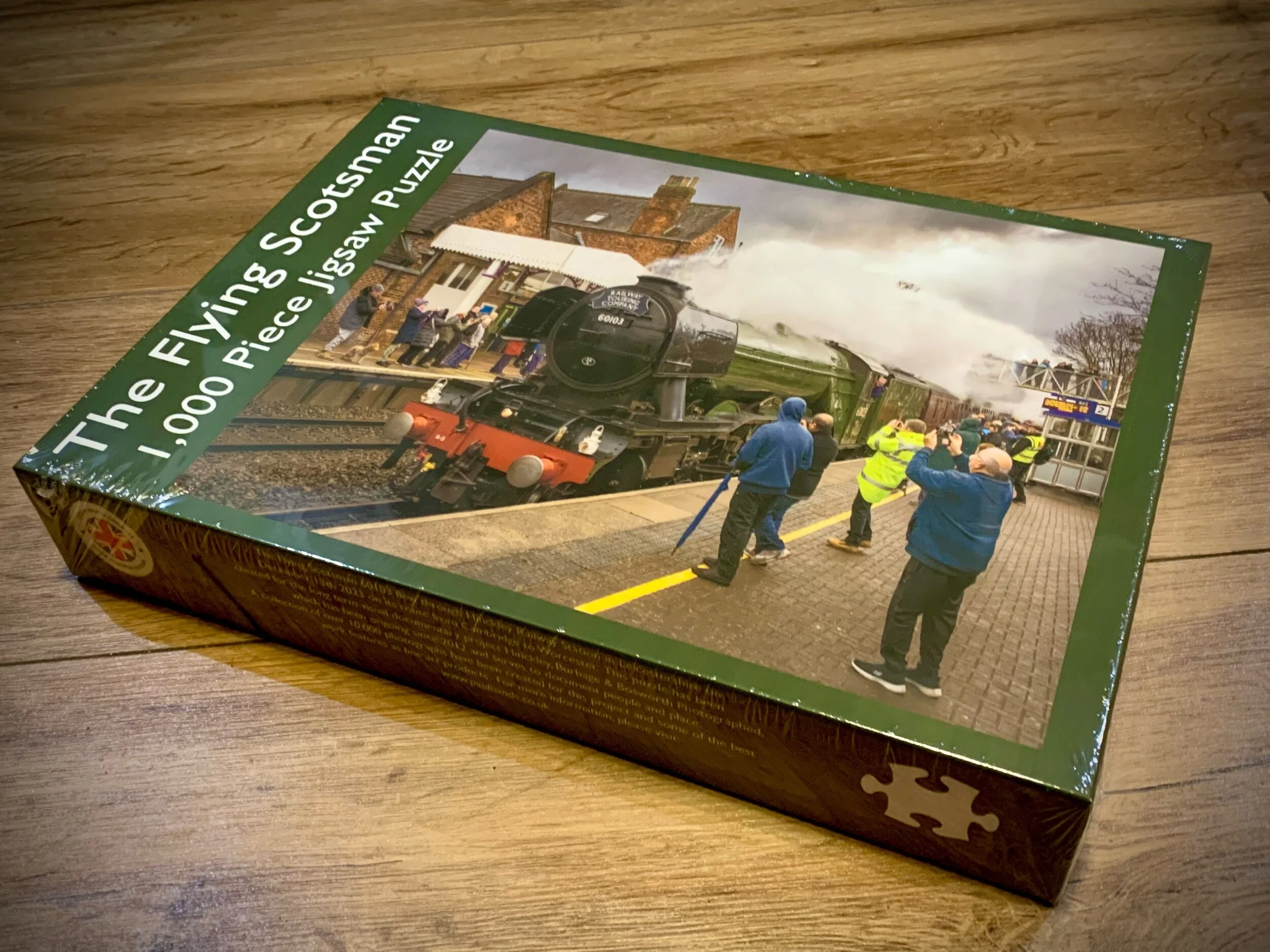The Flying Scotsman 1,000 Piece Jigsaw Puzzle
The Flying Scotsman 1,000 Piece Jigsaw Puzzle
The Flying Scotsman jigsaw puzzle.
The Flying Scotsman locomotive engine 60103 flew through Hinckley Railway Station in Leicestershire on Wednesday 13th December 2023 on its route from Cambridge to Worcester. This puzzle has been created for the long running visual documentary project Hinckley, Burbage & Bosworth Photographed, which has been ongoing since 2012 and serves to document people and place.
Over 10,000 photographs have been created for this project and some of the best work features as fine art products including this one, my favourite of them all..
The story behind creating this jigsaw puzzle…
After the success of the jigsaw made at Hinckley station with the Braunton 34046 when it stopped at Hinckley in 2020 during the pandemic. It is only just this week that I’ve sold the final remaining puzzle from stock and won’t be producing anymore of that design.
The day before I was tipped off by people that discovered The Flying Scotsman was to come through Hinckley. I was supposed to be at a client meeting for some new business but managed to postpone the meeting until after I’d got the photograph of the famous steam locomotive.
After dropping my daughter at school in the morning, I prepared my kit, left the studio and drove to sit in the car park behind the station as I was early. I scrolled through my timeline and noticed a post suggesting TFS had made an unexpectedly quick stop at Humberstone Gate in Leicester and was going to be 10 minutes ahead of schedule. I panicked and just grabbed my camera bag and ran to the platform, while trying to get my camera out safely. I managed it in time and then once I was in position on the platform, I immediately did a lighting test and opted for the fastest shutter speed I could work with.
There was some good banter across the tracks with other photographers as well and everyone was genuinely excited about getting their photographs and videos.
Quite a bit of time passed and there was no sign of her, which surprised me because of that post I’d seen on Facebook. One man on the same platform checked his app and confirmed the location of TFS. Then an Intercity whizzed through but I caught it and used that as a practice to determine my camera settings.
A toot on an old horn came bellowing out from in the distance and we all knew!
Then she appeared from around the bend approaching Hinckley station with giant plumes of steam pouring from her nose and she was coming at some speed, I could tell. I was ready, picked my focus point and then started designing the composition, checked all corners and edges and knew I was on target as The Flying Scotsman flew in to my trap.
As soon as she left I had to pack up and run with my kit to get to my meeting but as soon as I’d finished there, I went straight back to my studio to do the post production on the photographs. I was excited to see what I’d made and now, here you have my very latest jigsaw puzzle production The Flying Scotsman.
I’m now in the design stages, regarding the packaging and expect the complete puzzle to be off the press and ready for collection mid to end of January.
Text from Wikipedia:
LNER Class A3 4472 Flying Scotsman is a 4-6-2 "Pacific" steam locomotive built in 1923 for the London and North Eastern Railway (LNER) at Doncaster Works to a design of Nigel Gresley. It was employed on long-distance express passenger trains on the East Coast Main Line by LNER and its successors, British Railways' Eastern and North Eastern Regions, notably on The Flying Scotsman service between London King's Cross and Edinburgh Waverley after which it was named.
4472 became a flagship locomotive for the LNER, representing the company twice at the British Empire Exhibition and in 1928, hauled the inaugural non-stop Flying Scotsman service. It set two world records for steam traction, becoming the first locomotive to reach the officially authenticated speed of 100 miles per hour (161 km/h) on 30 November 1934,[1] and setting the longest non-stop run of 422 miles (679 km) on 8 August 1989 while in Australia.
Retired from British Railways in 1963 after covering 2.08 million miles, Flying Scotsman earned considerable fame in preservation under the ownership of, successively, Alan Pegler, William McAlpine, Tony Marchington, and, since 2004, the National Railway Museum. As well as hauling enthusiast specials in the United Kingdom, the locomotive toured extensively in the United States and Canada from 1969 until 1972, and Australia in 1988 and 1989. Flying Scotsman has been described as the world's most famous steam locomotive.[2][3][4]





